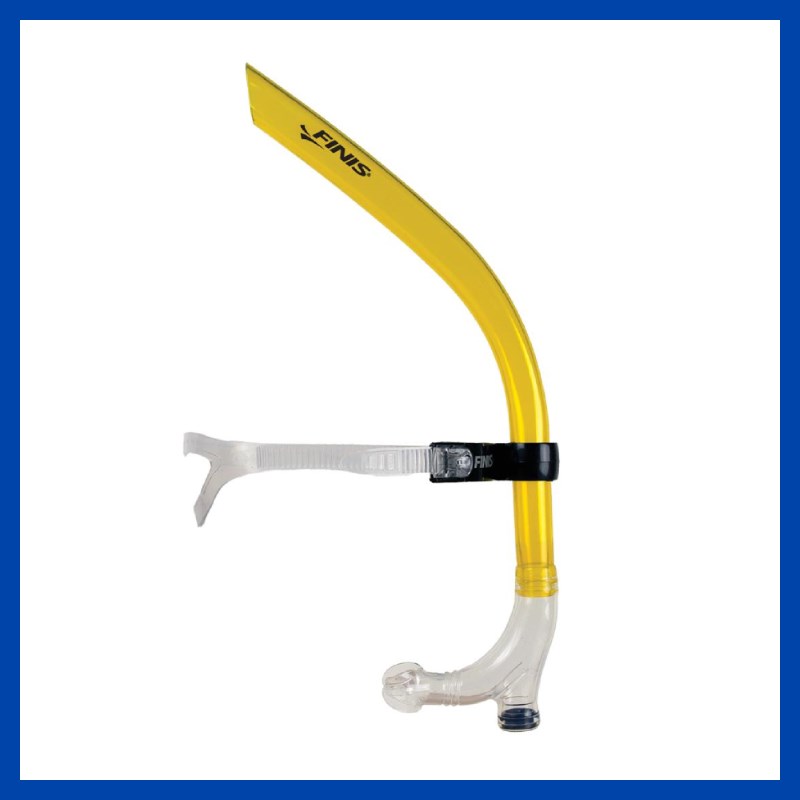Forums › Library › Knowledge Base › Guidance For Using A Snorkel
Please type your comments directly in the reply box - DO NOT copy/paste text from somewhere else into the reply boxes - this will also copy the code behind your copied text and publish that with your reply, making it impossible to read. Our apology for the inconvenience, but we don't see a convenient way of fixing this yet.
-
AuthorPosts
-
January 18, 2017 at 17:11 #12346
Admin Mediterra
KeymasterA snorkel made for swimmers is a good tool to remove the concern for turn-to-breath, when used for short periods of time. If breathing is yet disruptive to body position or distracting to the mind in some significant way, then using a snorkel can allow you to set aside this problem for short periods of time to work on some other feature of the stroke. Then set aside the snorkel to work on breathing.
Breathing is an urgently needed skill, but that doesn’t change the fact that it is an advanced skill that is dependent on foundation skills. The stronger the foundation skills the easier it will be to establish smooth, easy breathing, and vice versa. That’s just one of the reasons that in Total Immersion we are so adamant about your patience in setting up those fundamental body positions and movement patterns. But we also introduce breathing skills within Level 1 training… at the end, once you can lean upon those foundation skills to make breathing easier to do.

If you are going to use one we may recommend the Finis Swimmer’s Snorkel, just like this one pictured.
One liability is that the snorkel has that small volume of air in the tube in front of your mouth that you have to hold underwater if you want your face underwater, and it pushes back on your face, urging your neck into a local extension fault (i.e. tilting the head, putting a local bend in the cervical spine, to look ahead). There’s no way to avoid this push-against-the-head even with your head in neutral – it’s just water pressure pushing up on the air space in the tube. If you are trained and loyal to a neutral head-spine position (as you should be as a TI swimmer), then this will put a strain on the neck with that air pocket trying to push your head up and out of neutral position. You’ll feel the difference within a couple minutes and may likely find it unpleasant, from the neck or even down to the low back.
The whole body follows the head position, so anytime the head is out of this neutral position, realize that the rest of the spine will have a hard time finding or staying in its ideal balance and alignment. Therefore, one would want to use a snorkel sparingly to avoid this strain.
Obviously, many conventional swimmers seem to adapt to that head position with or without a snorkel and claim no problems, but with a tilt-down of the head into neutral position we’ve quickly fixed too many people with sore necks and sore lower backs now to encourage that tilted-up head position for anything but the shortest periods of time – as with ‘snapshot’ sighting in open water. (Discussing the use of a snorkel for other training purposes would be another topic, but the same spine health concern remains).

In conclusion, a swimmer snorkel like this is a nice tool to have in your bag to use on occasion, or to lend to a friend in the throes of stroke+breathing struggle. But if you are going to use one for this purpose, I strongly recommend that you spend at least as much time in that practice working on improving your breathing skills (correcting head position, timing, and air management) so that the breathing problem and subsequent need for the snorkel is eventually removed. Then you may consider using it for other purposes – but please employ the same critical thinking process before you do.
-
AuthorPosts
- You must be logged in to reply to this topic.
